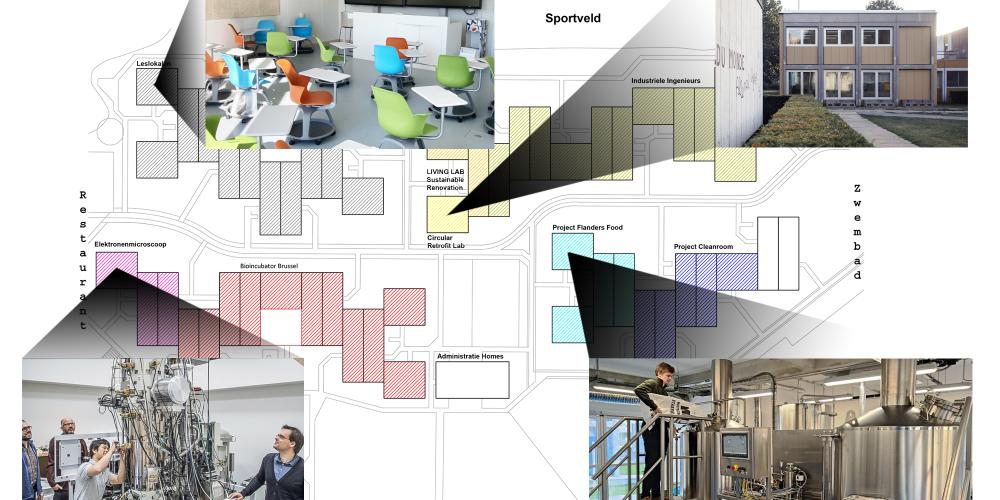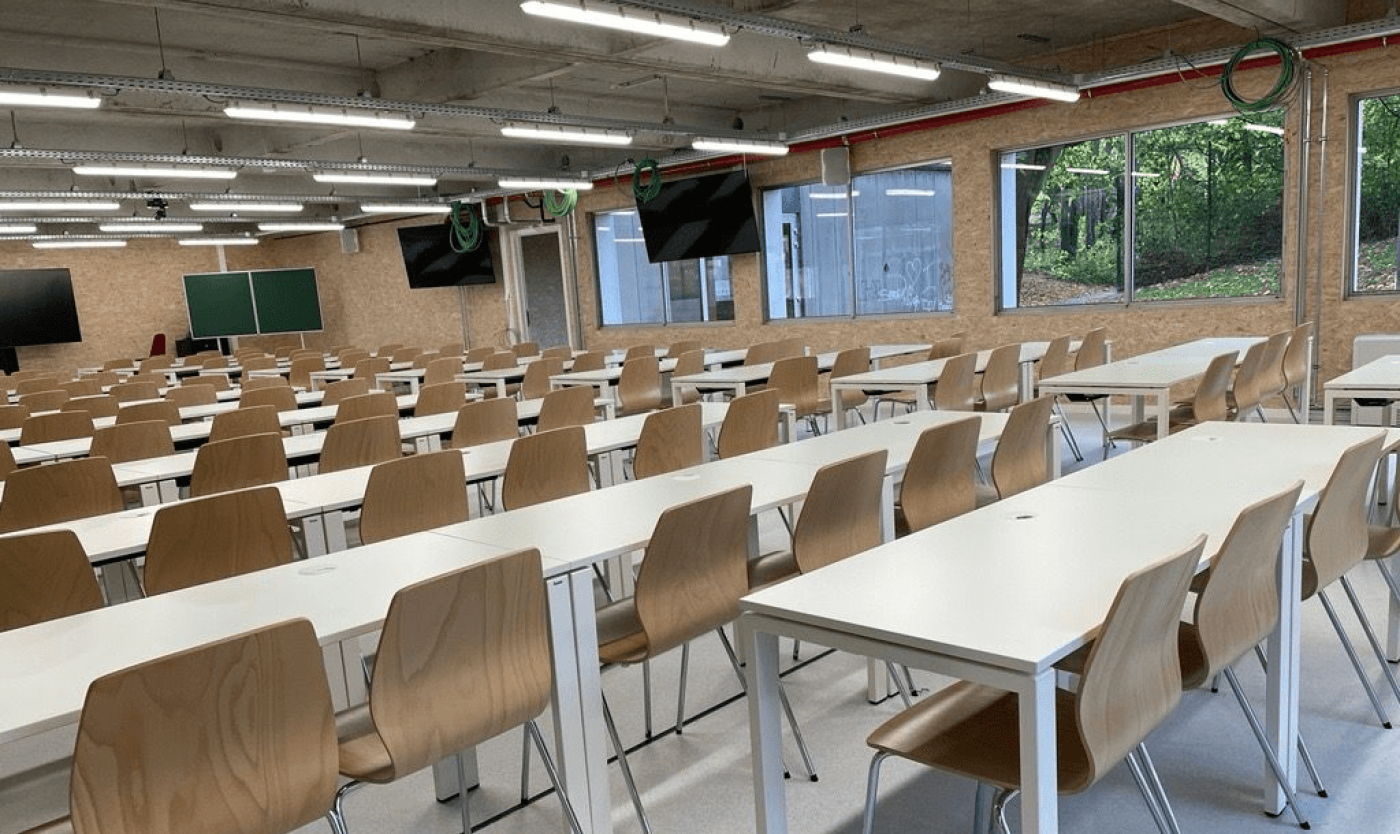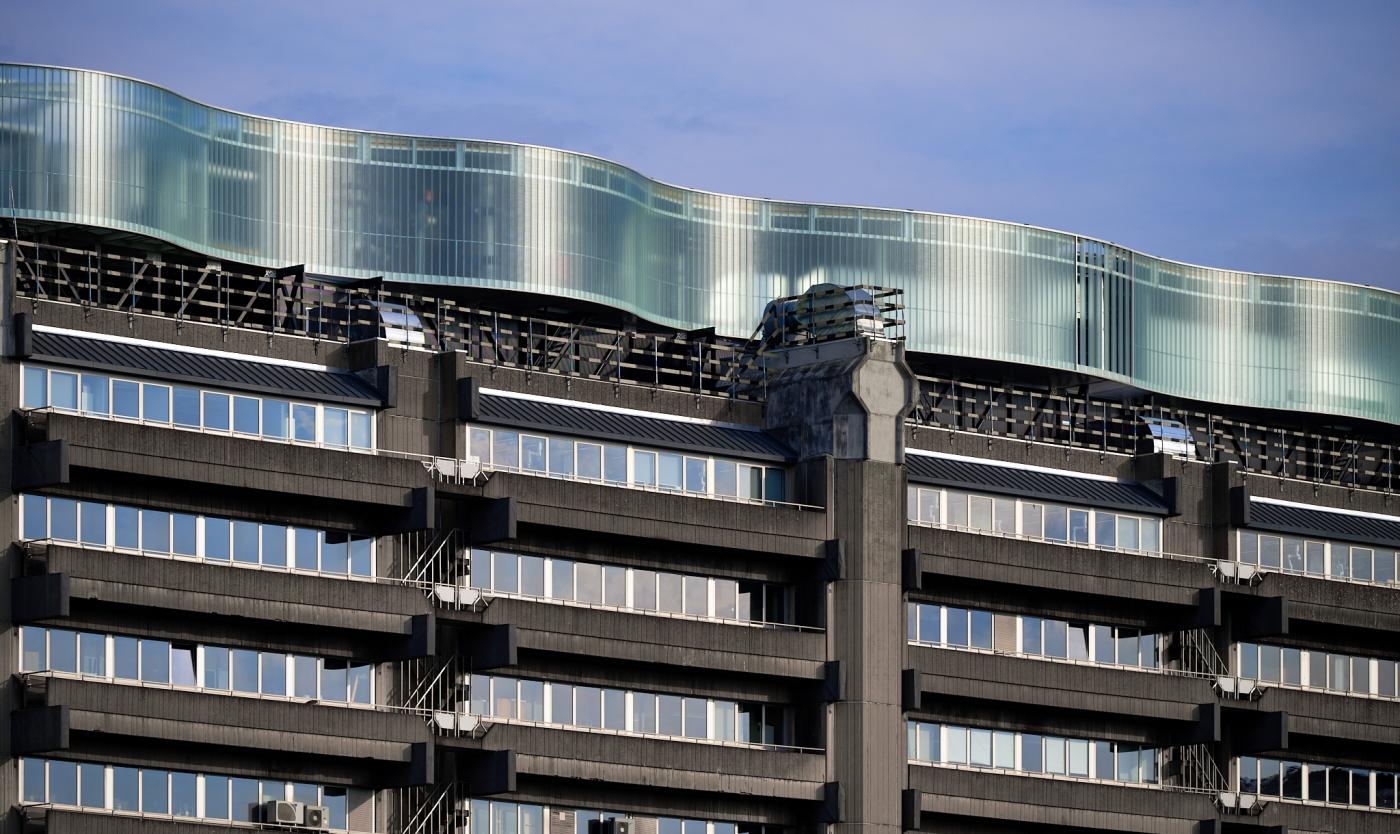
The former chambers of architect Willy Van Der Meeren at VUB in Etterbeek are undergoing a miraculous transformation. Where students once lived, a veritable Research Alley is now emerging, right in the middle of the campus. Some research teams have been housed there for some time, such as Biological Cryo-electron Microscopy and the Circular Retrofit Lab. Now, new initiatives are sprouting up, such as the Bioincubator Brussels and the Clean Room. Bart Sibiel, interim department head of VUB’s Infrastructure office, gave us an update. You can find all the developments of the VUB campuses in our Facts & Figures 2021-2022.
Bio-incubator
The bio-incubator is being built by VUB with the Flemish Institute for Biotechnology (VIB). The two institutions have jointly set up Bio-incubator Brussels bv, to allow new spin-offs to develop in the immediate vicinity of research groups working in the field of life sciences.
Cleanroom
Construction of the cleanroom is in the final straight and is due be completed in early 2024. This new open access cleanroom will specialise in the microfabrication of glass and silicon for microfluidics. Microfluidics is a recent multidisciplinary scientific field that deals with the study and manipulation of fluids in channels smaller than 1 mm. The driving force behind it is Professor Wim De Malsche, head of the µFlow team within the VUB departments of Bioengineering (DBIT) and Chemical Engineering (CHIS).

Classrooms
The number of students at VUB continues to grow. As a result, new classrooms are required, partly due to the abolition of the rooms on Jozef II-strata. The Infrastructure department created seven new rooms for this purpose in the “grey” blocks of the Van Der Meeren site, with capacities of 24 to 128.
Industrial engineers
The labs of the industrial engineers carrying out research on biomass, energy conversion, materials processing and mechatronics are in the “yellow” dorms next to the sports ground on the Brussels Humanities, Sciences & Engineering Campus. Infrastructure completely renovated the inside of these buildings. To transform them into multifunctional labs, the rooms were stripped back to the concrete structure, leaving the new installations accessible for easy adaptation. This was the final piece of the integration of the Department of Industrial Sciences.
Flanders Food project
VUB has started brewing beer, baking bread and making chocolate, the three pillars of a major fermentation pilot project. The new microbrewery, micro-bakehouse and micro-chocolaterie are now in operation in the old blue student quarters on the Etterbeek campus. In total, 21 PhD students will work on the project. “We will brew, bake and make chocolate under the banner of the Fermented Food Pilot Plant,” says founder Luc De Vuyst, professor of industrial microbiology and food biotechnology.
Living Lab
In this living lab, researchers and project managers joined forces with practitioners to develop and demonstrate sustainable renovation strategies for Brussels’ post-war heritage. Using the student residences as a testing ground, they created a toolbox for practitioners and demonstrated innovation in construction and collaboration.

Photo: Jean Cosyn
Building G
Building G is outside Research Alley, but it is a striking renovation. Photographer Jean Cosyn even spotted a snake on the roof. This renovation tackles G10 and G9, the top two floors with the greatest energy consumption. The building dates from 1975 and is no longer up to contemporary energy and installation standards. One at a time, the two floors will be almost completely gutted and refurbished for state-of-the-art laboratories. The heating installations will be updated and expanded with new technologies for heating and cooling using renewable energy. These technologies are housed on the roof. Building G is mainly used for teaching and research by the faculties of Science and Bioengineering.
Circular Retrofit Lab
The entire concept of the Circular Retrofit Lab starts from change-oriented building: the lab can one day serve as a student dormitory again, or as a study room, laboratory, classroom or even an ecological guesthouse. It opened in May 2019. “The time when one building had one function is over,” says Professor Niels De Temmerman, who pioneered the lab. “This pilot project also proves that the prejudices that still often prevail around circular building are unjustified: these new, innovative systems offer just as much quality, comfort and architectural freedom as traditional building systems and methods.”
Electron microscope
This microscope, unique in Europe and installed thanks to a €4 million grant from the FWO, allows scientists to visualise the building blocks of the human body with atomic precision. The research laboratory with the biological cryo-electron microscope was opened in March 2020. This Centre for Structural Biology led by Professor Jan Steyaert is renowned worldwide for its research on the structure and function of proteins. Living things from humans to bacteria are made up of thousands of different proteins, each with a unique structure and required for a different function in the cell. These proteins ensure that the cell functions properly. But they are also a vital target of drugs to fight diseases.
Homes Administration
In the middle of Research Alley are the old premises of the housing department. This will serve as a central technical room for all the labs and classrooms in Research Alley. One example could be heat pumps to supply heat to the buildings. But its purpose is yet to be decided.